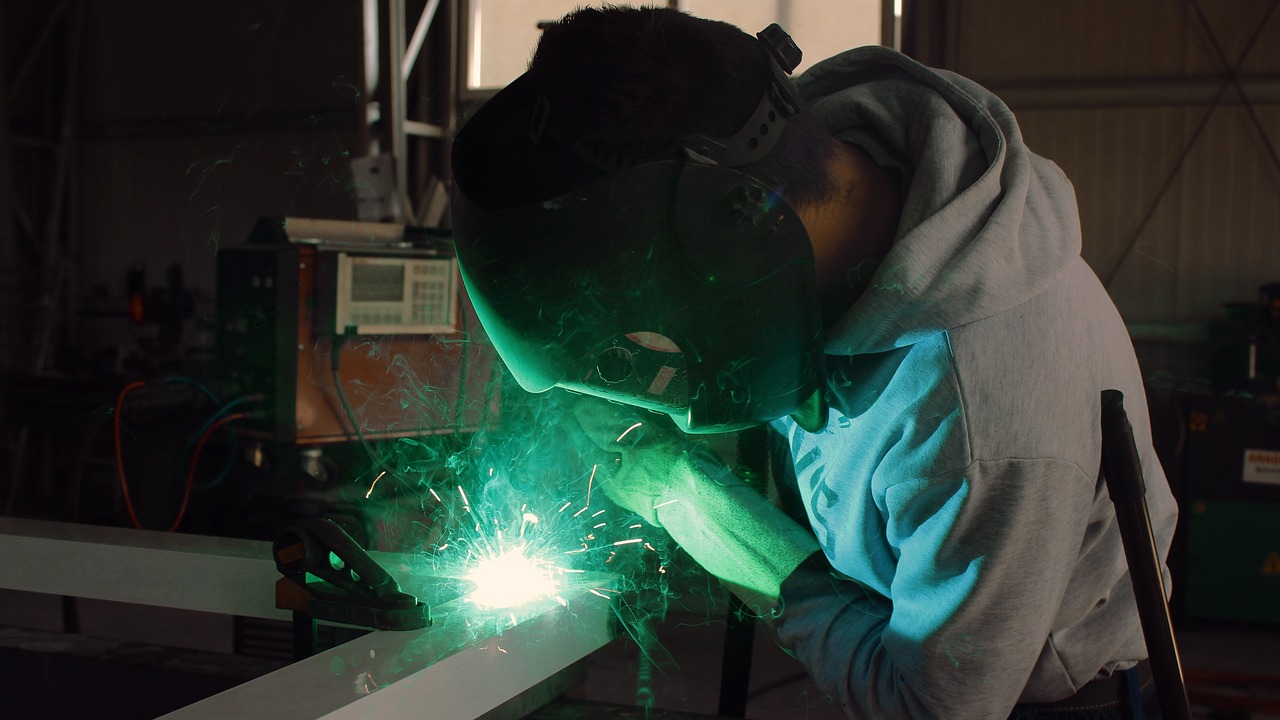Welder: Cover Letter Example or IResume Letter Sample
Welders tend to have highly diverse backgrounds when it comes to training and experience. There are multiple pathways to obtaining a welder's education, and myriad industries in which welders can gain experience. A successful cover letter and resume will depend on how you showcase what kind of training you have, and what kind of industry you are familiar with.
Some general pointers include using active words in your cover letter, mirroring job description phrases in your cover letter, including a skills section near the top of your resume, and keeping all information concise and neat.
Welding Career Overview

Welders, at a base level, use welding equipment to fabricate and repair metal objects. General skills include operating and maintaining various welding equipment, reliably setting up jigs and layouts for fabrication, an understanding of basic metallurgy, and rigorous adherence to safety protocol.
As a welder, you will need to have high attention to detail and process. Each step of the fabrication process requires precision to yield a high-end result.
Industries
Welders can find work in many fields, including shipbuilding, aerospace building and maintenance, automotive repair, construction, decorative metals, and pharmaceutical manufacturing, to name a few. Each shop environment is different, with some industries relying more on unskilled welders to simply run the same weld repeatedly on a manufacturing line and other industries relying on welders to creatively problem solve, read plans and set up their workflow.
Education and Salary
Working as a welder does not require special certifications, but many employers and unions prefer workers who hold Welder Certification credentials. The American Welding Society offers voluntary professional training. In addition to professional certifications, it is possible to gain the skills needed through apprenticeships, vocational programs, and university training.
The pathway to becoming a welder is as varied as the industries available. Welders can expect to pull in a salary between $20,000 and $50,000 depending on experience, skill, and industry.
Welder Cover Letters
When you create a cover letter for your dream welding gig, make it clear that you bothered to read the posting. The most important thing a cover letter does is explain why you are the perfect fit for the position you are applying for over another candidate. Repeat and rephrase the listed job requirements and desired skills.
If an employer wants to see someone who is a skilled pipe-fitter with experience working outdoors, make sure you include a sentence or two about how you have been successful doing that thing. Find the things in the job posting that fit your experience and highlight them.
Language and Tone
Make sure you use positive, active language. Some great buzzwords for welders include "fabricate," "produce," "precision," "high-end," "created," and "assembled." Use language that feels natural to your experience. Welders have a jargon, and chances are that if you have any experience in the field, you speak it. Hiring managers for welders are also likely to speak that jargon, so don't be afraid of using it within reason.
Be sure to state your excitement and commitment to the job. Explain how the job fits you, as well as how you fit the job. Employment is an agreement between employer and employee. Overstating how you fit while neglecting to mention how the company is right for you can sound desperate.
Sample Text
Dear Hiring Manager and Company X,
I was excited to see your job posting on (insert source here) as I feel that I would make an excellent fit for the position. As a welder, I have ample experience working on all types of metal and am intimately familiar with TIG, MIG, flux core (etc.). My experience as a production welder will be a great asset to Company X because I am organized, detail oriented and committed to the internal process.
From working at Company W, I have gained the knowledge and habits of a safe operator and can produce high-end, precision metal work. At Company W, I was able to accomplish/complete (list three achievements, or projects you are proud of.) I can guarantee accurate and consistent work while building from plans and designing my fabrication setups.
I possess a high level of skill and have a deep understanding of heat dynamics across various metals. As a professional welder, I am confident that my level of expertise, professionalism, and reliability will be a great boon to your organization.
Tip!
Since welders can work in various fields, you may find that the job you are applying for is in a different industry. Not to worry! The skills of a welder are scalable and malleable. Make sure you mention that you know of the shift in the industry and explain why you are still the right fit:
While researching Company X, I noticed that you specialize in (list a project type you think is interesting!). I am very interested in working in this field because (say why you are interested!). Although my work at Company W is not the same, I feel that the experience I have garnered there will support my transition to Company X. I am a quick learner and am confident I will be able to manipulate my abilities to this field. (List a few skills that you know will translate to the new field).
How To Stand Out From the Crowd
The importance of a "Skills" section cannot be overstated for tradespeople. Education tends to be a mixed bag for skilled tradespeople, often being made up of apprenticeships, vocational training and a slew of post-secondary courses and certificates. For hiring managers, it can be difficult to understand what a candidate knows from reviewing education alone.
For this reason, a skills section should be one of the top tier sections on your resume. Make sure that this section is neat, clean, easy to read and understand, and sticks out from the rest of the information on your resume. Hiring managers want to know what you can do!
Regarding importance, after skills, education is likely the next section. Showcasing your educational background in a clear way allows hiring managers to understand the journey you have taken to become the welder you are. List all certifications and relevant courses chronologically. For some educational experience, a short descriptor may be needed.
The last section of your resume should be your job experience. List your expertise chronologically, with your most recent position first. Say who you worked for, how long you worked there and what your title was as a header, for each job.
Below that, fill in a short, three sentence blurb about what your main duties were in that position. When you craft these blurbs, use active language and concise writing. Optional sections include awards, professional recognition, professional memberships, and hobbies.
General Layout Guidelines
Start your resume off with a header that includes your name and contact information. Format this header in a slightly larger typeface, with your name in bold. Make it easy for hiring managers to understand who you are and how to get in touch.
If your resume is more than one page, include an abbreviated footer with a page number and your last name. Use the same typeface, in bold, in a slightly smaller point for each section heading. Do not use script typefaces. Choose clean, easily legible fonts. Organize your resume clearly, with obvious section breaks.
Don't worry about the old "keep it to one-page rule" if you have enough experience to fill two pages. Just make sure you put the essential information on the first page. The first page should include your Skills section, your Education and Certifications section and at least the first most relevant job experience entry.
When you are done with your resume, look at it from across the room. Can you tell where section breaks are? Does the layout feel intuitive and comprehensible? If you can say yes to both of those questions, it is likely that an employer will be able to understand your organization system.
Whatever system you organize around, make sure it is easy to edit. A resume is a living document, and you can save yourself a lot of time by creating a layout that you can easily update.
If you choose to use a pre-designed template to lay your resume out, make sure you personalize it a little bit. Maybe change the typeface slightly, or choose a different color scheme. Employers receive hundreds of applications and having a resume that literally looks like someone else's does not help you stand out.
Conclusion
Welding can be an exciting career path. You will work in different settings, creating different things with your labor. Creating a resume for welding is similar to creating any resume, with added emphasis on specific skills you do well. Once you draft your cover letter and resume, have someone you trust look it over for you.
Ask them a few feedback questions, like "can you tell I am excited?" and "does it seem like I have a true understanding of my field?" Employers want employees who are happy to show up to work every day and can deliver on promised results. Don't overstate your abilities, chances are you have a great skill set without the need for embellishment. Happy job hunting, and good luck!







Leave a Reply